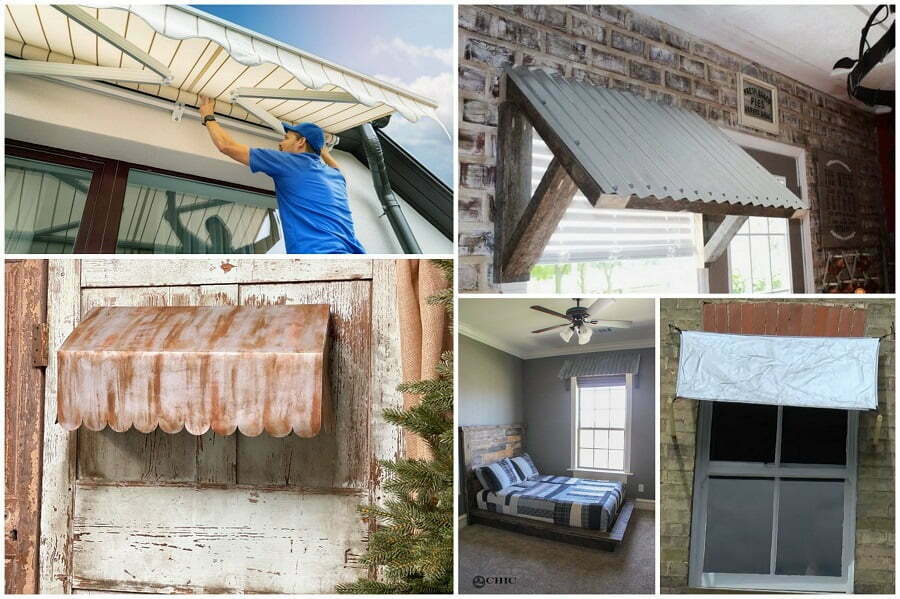
Looking for DIY awning ideas to enhance your outdoor space while staying within budget? This guide dives into creative and cost-effective options for building your own shade structures. Awnings provide much-needed shade from the sun, protecting you and your belongings, but purchasing ready-made awnings often comes with a hefty price tag. The good news is you can create stunning outdoor living spaces without breaking the bank with DIY awning projects. This comprehensive guide outlines a range of DIY awning ideas, covering materials, designs, and essential considerations for successful installation. We’ll explore budget-friendly materials, simple designs, and tips to make your DIY awning project a resounding success! Let’s dive into the world of DIY awning ideas!
Initial Planning and Design:
Assessing Your Needs
Before jumping into the design process, carefully assess your needs and available space. What type of shade do you need? How much sun exposure do you want to block? Consider the size and location of your desired awning. This initial assessment helps determine the ideal design, size, and material for your project. Detailed plans will be essential to manage every phase of the project from beginning to end. Make note of the amount of shade you need, the direction of sun exposure and any necessary structural support.
Choosing the Right Materials:
Budget-Friendly Options
Choosing the right materials is crucial for both aesthetics and functionality. Consider using readily available and budget-friendly materials like PVC pipes, wood, or even repurposed materials like pallets. These materials can be surprisingly effective in creating sturdy and attractive awnings. Before selecting any material, thoroughly research its durability and weather resistance for your specific climate. Different materials offer different levels of protection from the elements. The material selection phase will directly influence the overall durability and longevity of the awning.
Designing Your DIY Awning:
Simple Designs for Maximum Impact
For a simple yet effective design, consider a straightforward awning that incorporates strong support structures. A basic awning design can greatly maximize the aesthetic impact of a simple DIY awning project! The key to success lies in the careful planning stages, which lays the groundwork for creating a gorgeous and functional addition to your home. By focusing on a clean and refined design, you can transform an ordinary space into an inviting outdoor oasis. Simple designs are often the most effective and create the desired visual impact in a clear and organized manner.
Construction Techniques:
Step-by-Step Instructions for a Solid Structure
Once the design is finalized, it’s time to implement the construction techniques. Pay close attention to structural support, ensuring that the frame is sturdy and resistant to weather conditions. Follow the design plans carefully, creating strong connections and precise measurements for optimal structural integrity. Take your time and double-check your measurements to avoid any costly mistakes during this stage of your project. Using high-quality tools and materials will significantly improve the construction process, ensuring a smooth and successful outcome.
Related Post : How Much Is Home Improvement Insurance
Adding the Finishing Touches:
Enhancing the Aesthetic Appeal of Your Awning
This stage focuses on optimizing your awning’s aesthetics to match your home’s exterior style. Use weather-resistant paints or stains to accentuate the design. Consider incorporating decorative elements or custom fabrics to personalize the awning. Adding personalized touches greatly enhances the aesthetic appeal and gives the awning a unique, personal touch. You can add additional visual appeal through the selection of a variety of colors, shapes, and designs.
Advanced DIY Awning Ideas:
Integrating Technology and Functionality
For more advanced DIY projects, consider integrating retractable mechanisms or weather-resistant fabrics for optimal shade and versatility. Consider incorporating sensors and automated systems to add an extra layer of convenience to your awning installation. Integrating advanced technology and incorporating smart systems can make your awning more functional and convenient in various settings.
Budget-Conscious Approaches to DIY Awning Projects:
Tips for Staying Within Budget:
This section will delve into creative cost-saving strategies for DIY awning projects, offering practical tips to make your awning projects more affordable. Choosing sustainable and budget-friendly materials can significantly reduce costs while ensuring the project remains aesthetically pleasing. Using readily available materials like pallets or wood can significantly reduce costs, saving you money and still making your project beautiful.
Troubleshooting Common DIY Awning Issues:
Strategies for Addressing Unexpected Problems:
This part will explore troubleshooting common issues encountered during DIY awning projects, providing practical solutions to overcome setbacks. Learning how to address any potential complications during your project can be invaluable in ensuring the longevity and functionality of your DIY awning project.
Frequently Asked Questions:
Q: What are some common mistakes to avoid in DIY awning projects?
A: Common mistakes include poor planning, inadequate material selection, neglecting structural support, and overlooking weatherproofing measures. Thorough planning, careful material selection, and paying attention to the smallest details during the construction stage are essential in minimizing the chances of making critical mistakes.
Q: How can I ensure the longevity of my DIY awning?
A: To ensure longevity, choose high-quality materials and meticulously follow the construction process, paying close attention to structural integrity and weatherproofing. Regular maintenance, including cleaning and periodic inspection, will contribute to your awning’s longevity and enhance its overall visual appeal.
In conclusion, DIY awning projects offer a unique blend of creativity and cost-effectiveness. By following these DIY awning ideas and considering your specific needs, you can create a beautiful and functional addition to your home or outdoor space. Remember to prioritize safety and consult local building codes. Ready to start your DIY awning project? Visit our website for more detailed tutorials and inspiration! We also offer a range of high-quality materials and components to help you get started.